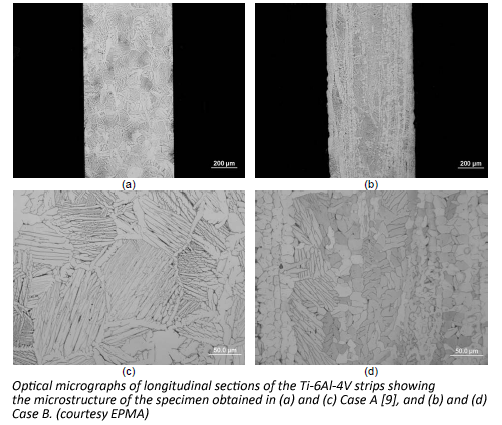CSIRO embarks on titanium powder rolled strip initiative
November 19, 2010
The Process and Engineering Division of CSIRO in Melbourne, Australia, has been actively involved for a number of years in the development of innovative processes for the production of ‘low-cost’ CP-grade titanium powders, including the CSIRO TiRO™ process and the ITP-Armstrong process. The success of these processes has encouraged CSIRO’s Light Metal Flagship to further develop downstream technologies to use the CP-titanium powders for the manufacture of semi-finished flat/strip products by a powder metallurgy process.
In this process, which was outlined in a presentation by G.M.D. Cantin, et al., at PM2010 in Florence, Ti powders are compacted by direct cold rolling to form a green strip. The green strip is then fed to a preheating station where it is rapidly heated in an argon atmosphere for a period of up to a few minutes before being transferred to a hot rolling station. The strip exits from the rolls directly into a cooling chamber which is also purged with argon to minimise the pick-up of atmospheric gases. The authors report that this technique is capable not only of producing strip from pure CP titanium powders, but also from Ti pre-alloyed powders, and blended Ti and elemental alloying powders.
The authors state that a significant advantage of this direct powder rolling, combined with the hot roll densification technique, is the short preheating time prior to hot rolling. This factor directly impacts on productivity. Another important advantage is that strip can be manufactured to thin gauges (<1 mm) in one or two hot rolling passes, which significantly reduces material waste, especially the yield losses resulting from surface removal treatments.
It was reported that strips with a density greater than 99.5% were fabricated from powders with different morphologies and properties, such as angular hydride-dehydride and sponge-like titanium powders. The pick-up of oxygen during the powder rolling process was measured to be low (<200 ppm). The mechanical properties of the consolidated and annealed strips were found to be dependent on the oxygen content of the strips, which was in turn influenced by the oxygen content of the powder feedstock. The tensile properties of strips made from powders with an oxygen content of approx. 0.35% and rolled to a percentage reduction of the thickness greater than 40%, approach those of the ASTM B265 Grade 3 material.
The direct powder rolling process was also used to produce a homogeneous Ti-6Al-4V strip with a density of 99.6% using hydride-dehydride titanium powder blended with the Al-V master alloy powder and Al powder. This strip had the tensile properties required for the ASTM Grade 5 material. The intensification of effort in this powder rolled Ti strip project has resulted in a recent up-scaling of the facilities at CSIRO including the installation of a new pilot scale hot roll mill scheduled for commissioning before the end of 2010. This facility will have a four-high roll system, which will significantly increase the capacity of the process, and is designed for the production of 400 mm wide and nominally 0.5-3.0 mm thick Ti and Ti alloy strip. CSIRO is currently actively seeking industry engagement to expand the process from its current pilot plant status to a production operation.
The authors stated that a major factor in the production of powder rolled Ti strip at reduced cost is the cost of the powder feedstock. Whilst the economies of scale are yet to be fully demonstrated for these “lower cost” powders, they say it is worth noting that powder rolling of Ti strip could also play a complementary role to conventional production technologies and would, therefore, be capable of adding to the overall growth of the titanium industry.
News | Articles | Market reviews | Search directory | Subscribe to e-newsletter
















